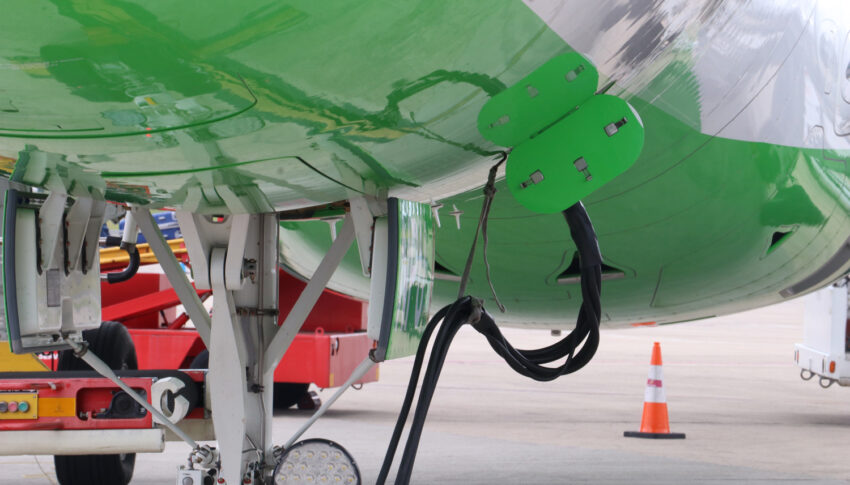“Algae-derived sustainable aviation fuels are functionally, chemically, and performance-wise fully compatible with existing aviation fuels, and are derived from oils extracted from algae,” Laurens tells us. “These oils can look chemically indistinguishable from biofuels derived from — for example — soybean oil, but the advantage of algae as a source of biobased oils is that for a given farming area, the oil yield can, and often does, exceed the farm-yield of soybean oil. Thus with the right R&D focus, algae-based technologies can help fill the feedstock requirements that are not competing with an existing food supply, thanks to deployment on marginal non-arable lands and utilisation of non-fresh water sources, and even include the use of wastewater for cultivation.”
A key difference comes in the production process, which is different to the current generation of technologies like seed-oil crushers, which process dry-harvested biomass. NREL is working on a wet-harvested biomass system for algae.
“The ultimate lipid or oil-to-SAF conversion is identical to HEFA-SPK [Hydroprocessed Esters and Fatty Acids – Synthetic Paraffinic Kerosene], and based on hydrotreating the fatty acids in the extractable oils,” Laurens explains. “The only changes that are expected are the removal of possible contaminants in the extractable oils — for example, the nitrogen content is higher in extractable algae oils (due to the higher fat-soluble photosynthetic pigments) compared with soy, but similar to some lower quality fats, oils and greases. Removing undesirable compounds is nothing new to the biofuels industry and algae oils will just follow known conventional cleanup strategies.”
Production requires water and nutrient sources, which is likely to mean that latitudes closer to the equator, following temperature and light, are the most efficient. Cooler climates may well find success in wastewater-based algae cultivation during water processing, which brings benefit not only to local water quality but in the algae that is a product of those systems.
“With the right R&D focus, the production quantities for a given farm can exceed 30T of biomass per acre, which would translate to up to 5–10T of oil per acre,” Laurens explains. “The timing is imminent at single farm scale thanks to pioneer farms in Texas and California. The full-scale long-term deployment could be realised within the next 5–10 year time frame.”
Along the way, new technologies — including AI and machine learning — may help to speed up deployment, to make processes more efficient and to identify patterns invisible to human eyes.
“At the large-scale demonstrations of such innovative algae farming and compositional readiness of the materials, there are many opportunities to deploy machine learning for a holistic mapping to crop health and yield potential,” Laurens says. “We are currently building tools to allow us to do this, based on hyperspectral imaging, spectroscopy, and computational fluid dynamics, and deploying optimised technology at scale will shift the paradigms and the speed to deployment, and hopefully support the large-volume feedstocks that are needed.”
As ever with SAF, a key question revolves around pricing, both compared with fossil kerosene and with other pathways.
“It is possible with the right combination of co-products in an integrated biorefinery to meet the cost-competitive price points that are sought by industry — however, this remains to be fully demonstrated at scale,” Laurens concludes. “The algae cultivation and extraction process is intensive, and thus often translates to a higher biomass production cost.”
Author: John Walton
Published: 23rd October 2024







